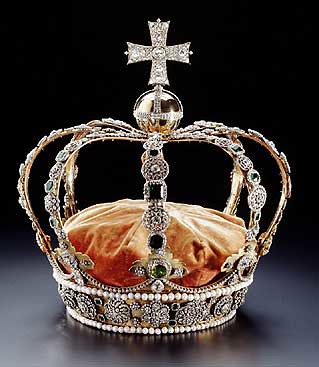 |
| HRH Prince Richard, 2nd Duke of Gloucester |
The Duke is 23rd in line to the throne, and is the first person in line who is not a direct descendent of King George VI; his father was Prince Henry, The Duke of Gloucester, younger brother to King Edward VIII and King George VI; this also makes him the youngest grandchild of King George V, the eldest being Queen Elizabeth.
 |
| HRH The Duke of Gloucester opened the Linburn Centre for Scottish War Blinded in 2011 |
His Royal Highness, who is Patron of the Nuffield Farming Scholarships Trust, met Nuffield Australia Farming Scholars in Sydney. The charity organisation provides a scholarship scheme for the benefit of the Australian farming community.
On 26th May 2012 The Duke of Gloucester presented the Duke of Gloucester Cup to the 2nd Battalion The Royal Australian Regiment at Victoria Barracks, Oxford Street, Sydney, New South Wales.
The Duke of Gloucester Cup
The Duke of Gloucester Cup, the three awards are presented to the most efficient infantry battalion of the Australian Army, ship of the Royal Australian Navy (RAN), and squadron of the Royal Australian Air Force (RAAF) during the previous year. The awards were created by HRH Prince Henry, The Duke of Gloucester in 1946, while he was serving as the Governor-General of Australia, and were first presented in 1947. The RAAF's Gloucester Cup recognises the most proficient flying squadron during a calendar year.
In January 2009 The Duke of Gloucester paid a visit to Melbourne,Victoria, and attended a Lecture at the Royal Society of Victoria followed by a Reception to commemorate the Centenary of Ernest Shackleton’s Expedition’s location of the South Magnetic Pole. The Duke of Gloucester crossed the South Magnetic Pole, Antarctica, to commemorate the Centenary of the first location of the South Magnetic Pole by the Northern Party of Ernest Shackleton’s British Antarctic Expedition of 1907-1909.
The Royal Society of Victoria had offered the flyover of the South Magnetic Pole, Antarctica, 100 years after it was first positioned by a party of Australians, Edgeworth David and Douglas Mawson and Scotsman Alistair Mackay, members of Shackleton’s British Antarctic Expedition 1907-1909.
Royal Duties
Prince Richard is President of Cancer Research UK, as well as The National Association of Clubs for Young People, and is a patron of British Association of Friends of Museums, Richard III Society and Normandy Veterans Association.
TRH The Duke and Duchess of Gloucester represented Her Majesty The Queen at the Mass for the Inauguration of Pope Francis’ Pontificate on 19th March 2013. They also attended the Beatification Mass for Pope John Paul II on 1st May 2011.
 |
| At the inauguration of Pope Francis I The Duke and the Duchess of Gloucester represented The Queen. |






